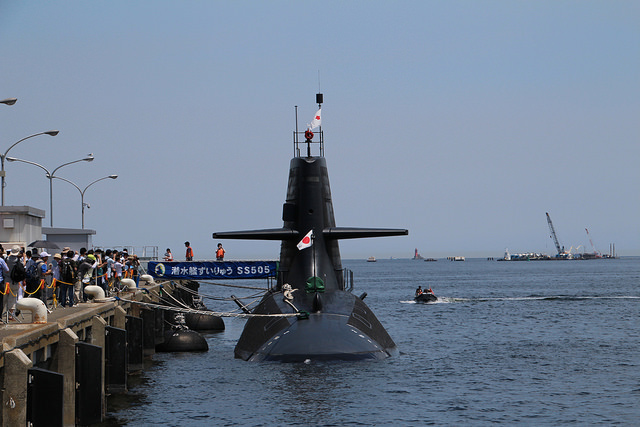
Editor’s note: The Strategist has invited all three SEA 1000 contenders to explain their approach to meeting Australia’s future submarine requirement.
At the end of November last year, Japan submitted to the Australian government its proposal for Australia’s future submarine program.
The Japanese proposal is low risk and meets Australia’s needs. It’s a proposal based on our accumulated experience and the proven technologies of the Soryu-class submarine, which is the world’s largest conventionally powered submarine. Seven Soryus are already in use by the Japanese Maritime Self-Defence Force.
Several key questions have been posed about whether our proposal will be able to meet Australia’s future submarine needs.
The following two posts will seek to explain to the greatest extent possible the truth about the capability of the Soryu-class and the reasons why the Japanese proposal is low-risk.
Can Japan’s proposal meet Australia’s cruising range requirement?
There’s a concern, promulgated in some quarters, that the Soryu-class submarine won’t be able to match Australia’s requirements regarding cruising range. Such a concern is mistaken, for in Japan’s pre-concept design, every effort was made to ensure that Australia’s cruising range requirements would be met.
Given that cruising range can be determined by the quantity of fuel expended and fuel consumption efficiency, the Soryu-class submarine was the basis of a comprehensive study on an internal layout made in order to ensure effective use of space by extending the hull and re-designing partitions. That study led to the conclusion that by increasing the capacity of the fuel tank and working on its positioning, as well as extending the hull design, the pre-concept design will be able to meet Australia’s cruising range requirements without any problems.
Is the internal space of the Soryu-class submarine too narrow?
The size of the reserve buoyancy compared to submarines from other countries and the double hull structure has led to questions about whether the internal space of the submarine is overly narrow.
The estimated surfaced displacement of the Soryu-class submarine is approximately 3,600 tonnes, while its dived displacement is around 4,200 tonnes. So in relation to the reserve buoyancy of the Soryu-class submarine, there’s no reason to believe that it possesses an excessive amount of reserve buoyancy compared to submarines of other nations.
Moreover, although it’s true that one section of the Soryu-class submarine consists of a double hull structure, a highly space-efficient outfitting using 3D digital mock-up technology and design techniques that prevent reinforcement structures such as beams from restricting space have created a wide internal space while avoiding a growth in the size of the submarine itself. Furthermore, the extension of the hull has allowed a much wider internal space than in the Soryu-class submarine.
The internal space of the Soryu-class submarine has been shown to a large number of Australians familiar with the internal space of the Collins-class submarine. So far, there hasn’t been any comments which indicate that the internal space of the Soryu-class is too narrow.
Is the lifespan of Japanese submarines too short when compared to Australian boats?
Until recently, Japanese submarines were used for a period of 18 years before being retired. The operational lifespan of the submarines was determined by the National Defence Program Guideline (NDPG) taking into consideration factors such as not exceeding the pre-set number of submarines to be retained by Japan (originally 16), technical obsolescence, and the introduction of new submarines incorporating technical improvements.
Japan decided to increase its submarine fleet to 22 vessels based on the 2007 NDPG, so a decision was made to extend the service life of our submarines by six years.
It’s not true to say that Japanese submarines can’t endure for long periods of time. If the Royal Australian Navy desires to use the submarines over a long period of time, the same level of technological checks that we carry out on our own vessels now will enable such desires to be met.
Some have said that corrosion of the double hull structure is the source of the submarine’s shorter lifespan, but that’s simply not true. The construction of the Soryu-class submarine in sections allows for an appropriate level of anti-corrosive maintenance. Japan has never experienced any major fault’s which have interfered with the operation of its submarines.
These appropriate anti-corrosive technologies were developed to allow our submarines to operate in a range of environments, even in harsh warm waters conducive to corrosion. Japan believes that such technologies will guarantee the effectiveness of Australian submarines which will also operate in the same maritime environments.

